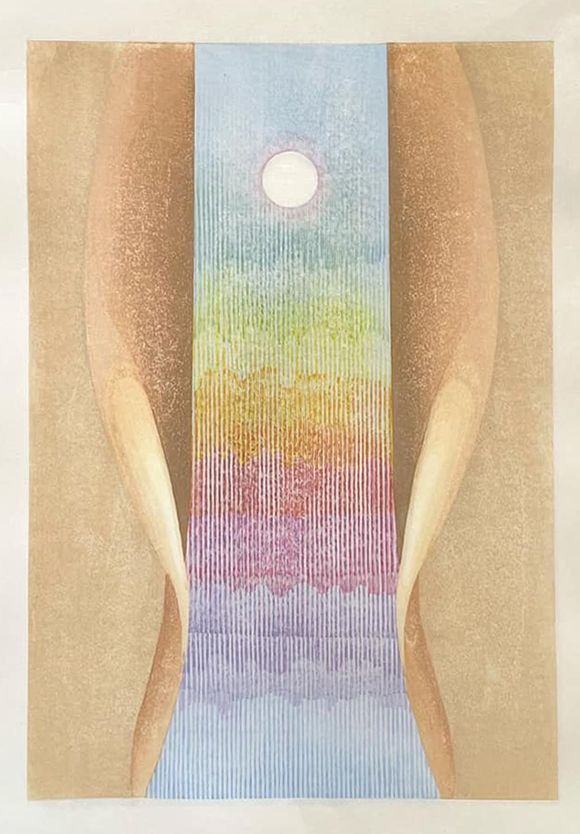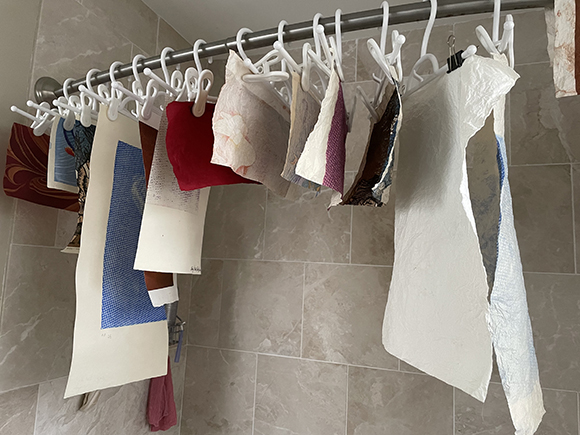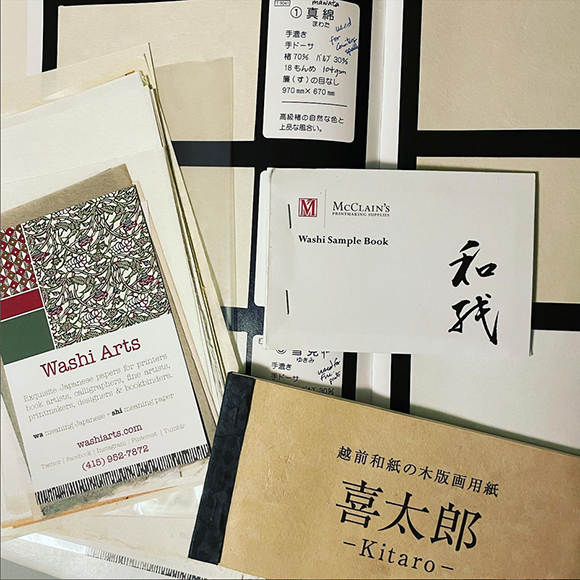Happy new year, dear readers. I haven't been posting much these days, as blogging seems a bit old fashioned in 2022. Yet, I still think blogging is valuable. It's slower than Instagram and other scrolling-based social media, it's more personal, and it makes me pause long enough to clearly articulate my thoughts and feelings.
As you may know, I've spent the past two years creating and distributing a tarot deck, called Woodblock Dreams Tarot. It's a standard deck, composed of 78 cards — 21 (the major arcana) were done as full woodblock prints and 57 (the 4 suits) were printed in parts and collaged/composed digitally. It has its own web site if you want to check it out: WoodblockDreamsTarot.com. Anyway, it's taken me longer than I imagined to bounce back from that project into making some new work. I have some ideas brewing and not many supplies left in my studio, including paper, so I've lately been researching Japanese paper trying to figure out what kind of paper I need for my new (still imaginary) work and… just wow. There's so much to figure out!
In the past I've kept my paper supplies pretty limited, purchasing familiar papers from familiar suppliers so that I could focus on the other myriad variables in the mokuhanga process rather than also constantly adjusting to new kinds of paper, but I've managed to work with quite a few papers nevertheless, and now that I'm looking for some new paper I want to do a quick run-down of what I've used.
From McClain's Printmaking (Group A):
• Echizen Kozo — one of my all-time favorites. Thick and kind of fluffy, this paper holds up very well to multiple overlays of color, keeps its shape, and colors stay bright when dry.
• Nishinouchi — I chose this for its darker tone when I was doing a series based on colonial American history. The surface is fairly hard, a little bit difficult to work with, but definitely the right look for that historical series — a bit somber and earnest, and colors not as vibrant when dry.
From Woodlike Matsumura in Japan
• Shioji — used for the halftone dot prints I made in the Relics series. Shioji has the feel of a cotton rag paper, and some of the tendency to stretch that a rag will give you. It worked OK for that series,which only required two impressions of color, but I'm not sure how well it would perform with multiple overprints.
• Yukimi — I took a big chance on this paper, choosing it for my Fire Series mostly because of its name, which means "snow viewing." I just thought it would be helpful to print Fire images on Snow paper. It's a nice paper, whiter than many handmade Japanese papers, and it behaved very well under repeated strong applications of color and big baren pressure.
• Gekko — This is a very thick 100% kozo paper that I chose for making prints with full size sheets. It's a workout with the baren because it's so thick, but it prints beautifully and I really enjoy how the prints hang.
• Mawata — I used this paper for white line prints, which means that I printed dry with it, but it was fabulous for that and held up really well to strong rubbing with a spoon. I haven't used it for straight up mokuhanga, but I have no reason to think it wouldn't do very well dampened and under a baren. It's a soft-ish paper with a pleasing creamy tone, embosses well, and holds color beautifully.
My next project, should I choose to accept it :), will have different requirements so that's why I'm doing paper research. Here are a couple of things that have helped me with my research:
1.
This awesome interview with Nancy Jacobi, founder of Japanese Paper Place, on the Unfinished Print podcast. Nancy reveals many of the secrets of washi from her 40+ years of working with Japanese papers. And if you haven't discovered
The Unfinished Print, run on over! It's a podcast devoted to all things mokuhanga and host Andre Zadorozny has interviewed some mokuhanga luminaries.
2. This out-of-print book about washi, that I scored at my local used book store, seems to have everything you could ever want to know about washi.













